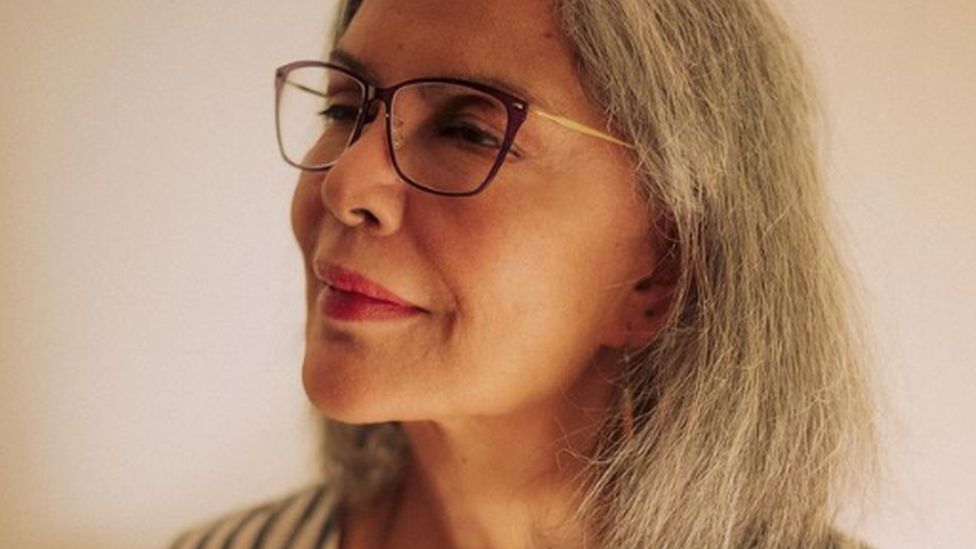ARTICLE AD BOX
 Image source, Zeenat Aman via Instagram
Image source, Zeenat Aman via Instagram
Zeenat Aman has created waves with her Instagram debut
By Zoya Mateen
BBC News, Delhi
That's how Zeenat Aman, who captivated Indians in the 1970s with her trailblazing style and unconventional Bollywood roles, described herself on Instagram earlier this month, when she made her debut there.
The 71-year-old has only posted about a dozen times so far - mostly photos of herself with musings on ageing, her eventful career and her pet dog Lily - but her presence has captured people's attention and imagination.
Her first couple of posts were photos shot of her by a young woman photographer in the "comfort of [her] home". Wearing comfortable linen overalls and perched on a stool near a patch of sunlight, Aman ruminated in her caption about how dominant the male gaze was in films and fashion during the 1970s.
"Over the course of my career I have been photographed and filmed by many talented men. A woman's gaze though, is different... No lights, no makeup artist, no hairdresser, no stylist, no assistants. Just a lovely sunny afternoon together," she wrote.
The post has since been shared thousands of times across social media platforms, with Aman being praised for sparking a meaningful conversation in the simplest of ways.
But the most remarkable part about her Instagram debut is that an actor whose most memorable performances occurred four decades ago has managed to connect with a much younger audience almost instantly. Even millennials - who would usually prefer memes, hyperbole and Reels - say they are enjoying her deep, thoughtful captions.
As one user put it: "The metaverse can be a quiet, graceful space, if you want it to be. Zeenat Aman showed us how."
Of course, Aman is no stranger to fame and attention, both good and bad.
She was already a successful model when she started her career in Bollywood in 1971 with small role in a film called Hulchul.
That same year, she catapulted to dizzying fame with her performance in the hit film Hare Rama Hare Krishna, where she played a naïve, young flower child who is a drug addict.
From blowing smoke rings in crowded, dingy rooms to dancing in scanty tie-dye dresses with hippies, Aman - and the film - transformed women's fashion in the film industry. In the coming years, Aman would continue to be a trendsetter, experimenting with roles far ahead of their time.
She was not a traditional Bollywood heroine - her unconventional beauty, bold fashion choices and outspoken ways stood out too much. But audiences loved her.
Image source, Getty Images
Image caption,Aman worked with several top actors such as superstar Dev Anand
She was also very self-aware. "In the world of commercial Hindi cinema it is very easy to get stuck with labels. Mind you, women have a very set thing to do - sing songs, look pretty," she told the BBC in 2013.
"Gradually even I got absorbed into the mainstream but towards the second half of my career I did films that had different roles."
She truly did. From Sheetal in Roti Kapda aur Makaan (1974), who chooses a suave, rich man over her unemployed boyfriend, to Bharti, a rape survivor on a quest for justice in Insaf Ka Tarasu (1980), Aman constantly pushed the boundaries of cinema and also inspired many women to do the same in their lives.
Her most controversial role was in 1978 - Satyam Shivam Sundaram sparked a flurry of controversies because of the scanty outfits worn by Aman's character Roopa and an intimate scene between her and the actor Shashi Kapoor.
In one of her Instagram posts, Aman revisited the controversy as she shared a photograph of herself taken during a camera test for the film.
"I was always quite amused by the accusations of obscenity as I did not and do not find anything obscene about the human body... Rupa's sensuality was not the crux of the plot, but a part of it," she wrote.
Aman's "Western image" was fiercely debated throughout her career but the actor remained comfortable in her skin. She had a magnetic screen presence and conducted her life - including traumatic personal experiences - with self-assurance.
Decades later, Aman is no longer the smouldering diva from the peak of her career. But her penchant for starting conversations is unchanged.
On Instagram, the actor is charming and matter-of-fact as she reminisces about her youth and stardom - not through a lens of regret, but simply from the vantage point of being older.
Her thoughts about not wanting to dye her grey hair struck a chord with followers. "I was initially reluctant to stop dyeing my hair, and was strongly advised against it... It was only once I contemplated upon my own hesitations that I realised I really don't care to buttress our society's idolisation of youth," she wrote.
In post after post, Aman insists that an older woman does not lose her beauty or agency. "In general, as we age, men are bequeathed gravitas but women are at best offered sympathy," she writes.
Being young, she adds, is wonderful. But so is being old.
Image source, Getty Images
Image caption,Aman comes across as being confident in her own self
Some women told the BBC that Aman's posts reminded them of their own vitality and agency.
"At a time when technology and Instagram filters are rewriting our bodies and faces, Aman - with her gorgeous silver bob and soft wrinkles - is sparking a more honest assessment of what it means to be a woman," says one fan.
"I just love how frill-free and real she is," says another.
And it's not all weighty reflections. The actor also includes light personal anecdotes - last week, she said she learnt the meaning of the word "thirst-trap" from her sons. And fans, young and old, loved every bit of her innocence.
As one Twitter user said: "Zeenat Aman joining Instagram is one of the best things that has happened on the internet in recent times."

 1 year ago
18
1 year ago
18








 English (US)
English (US)